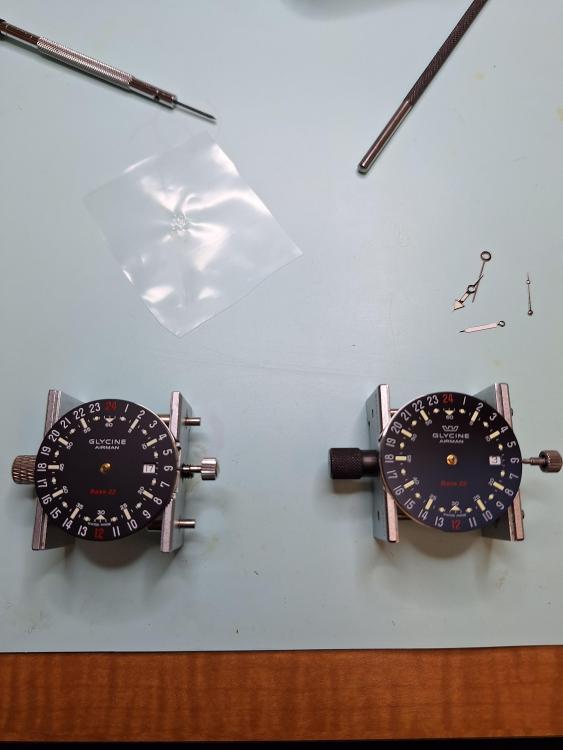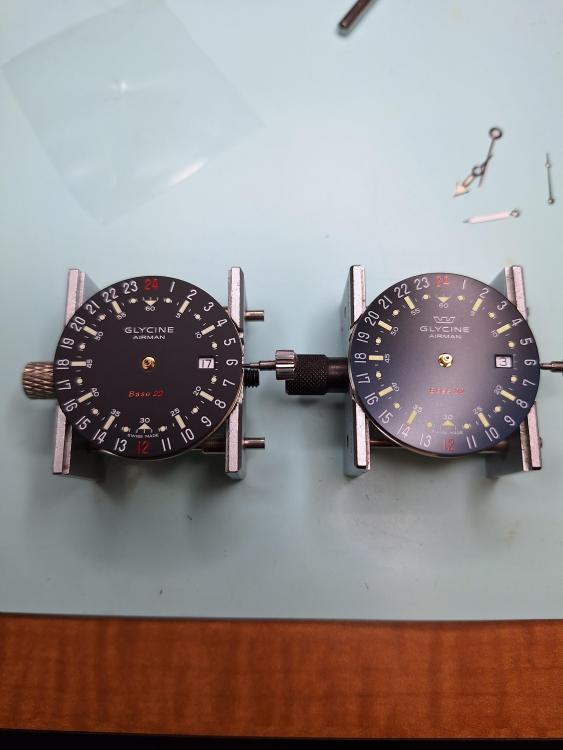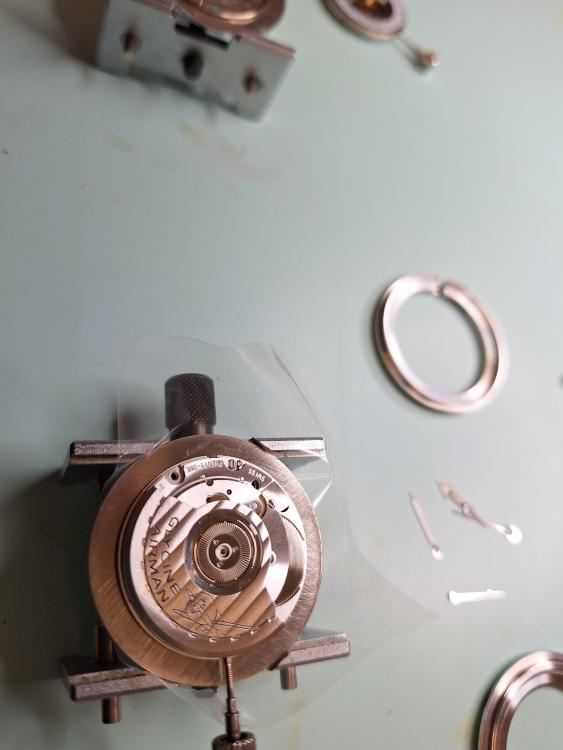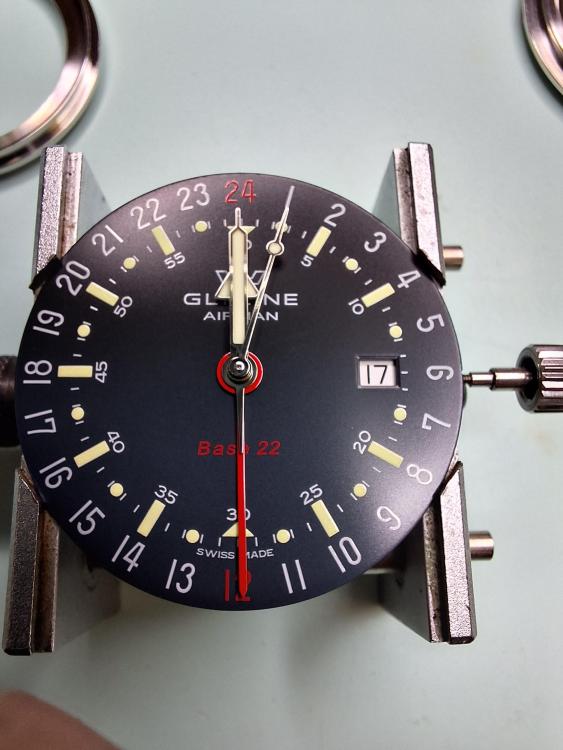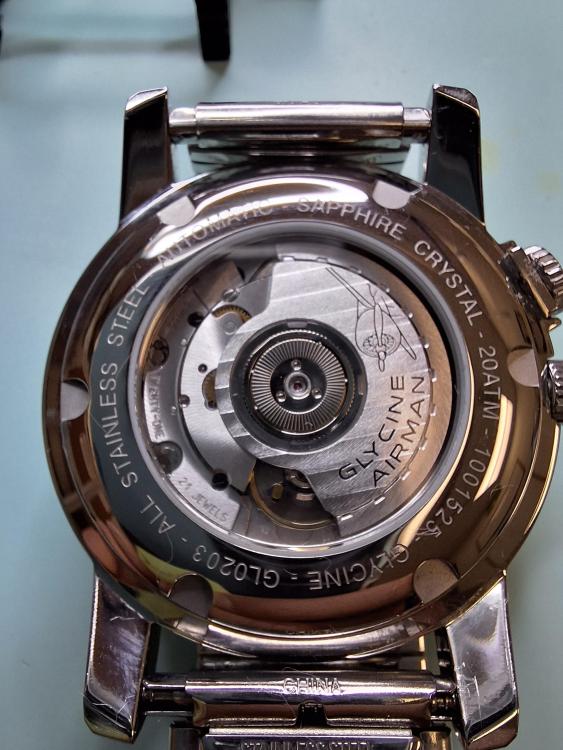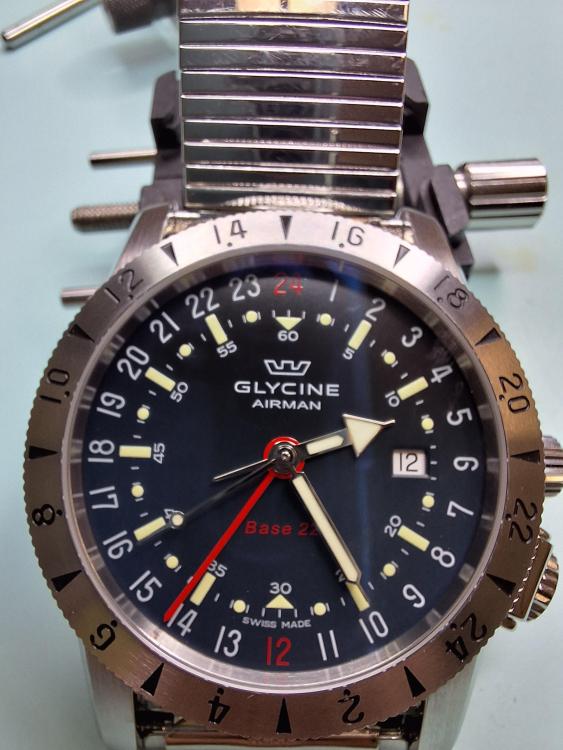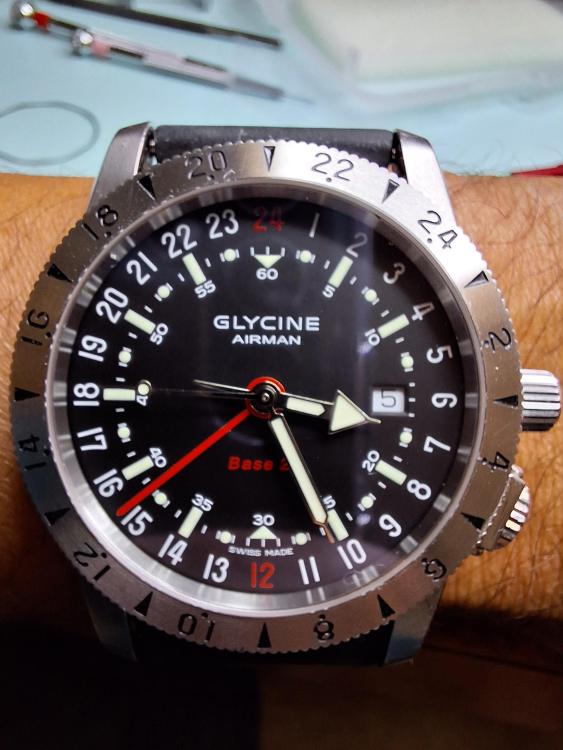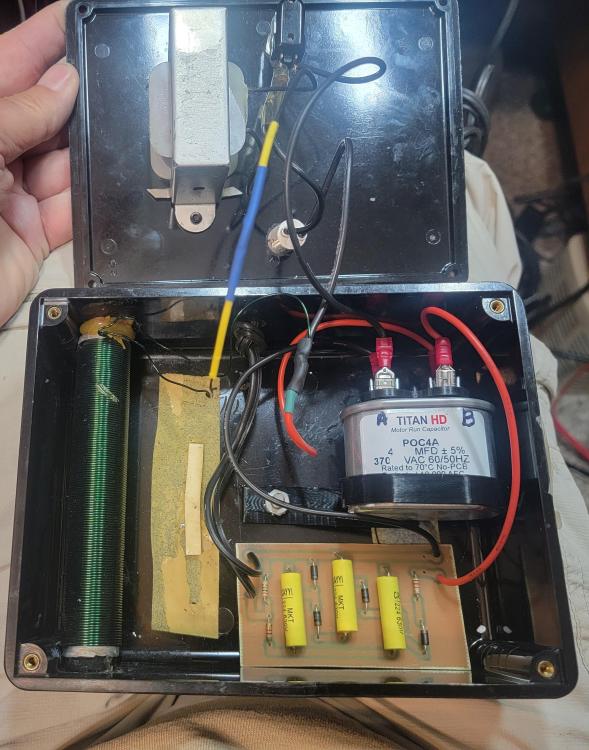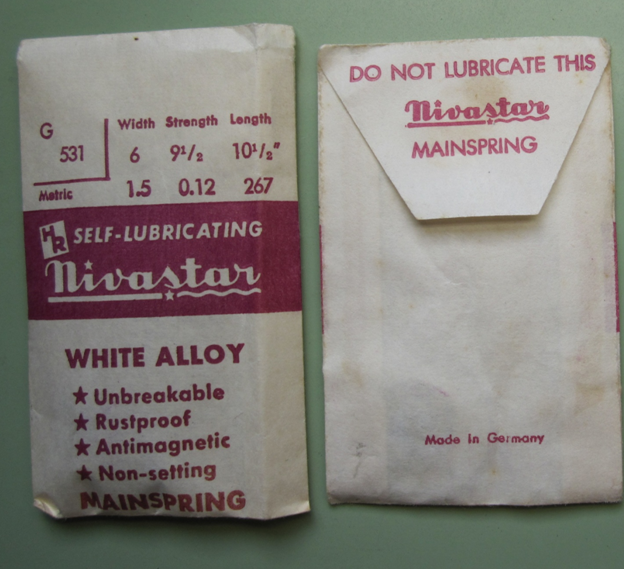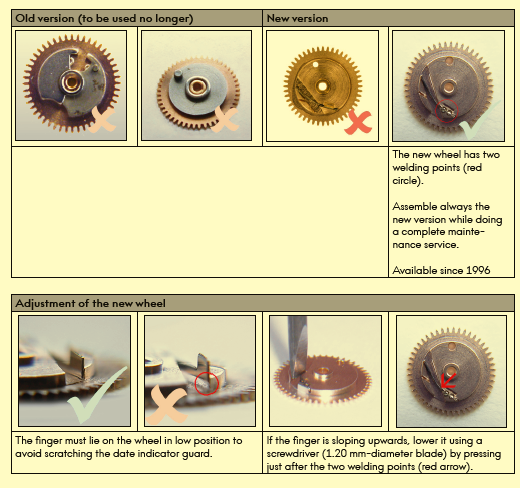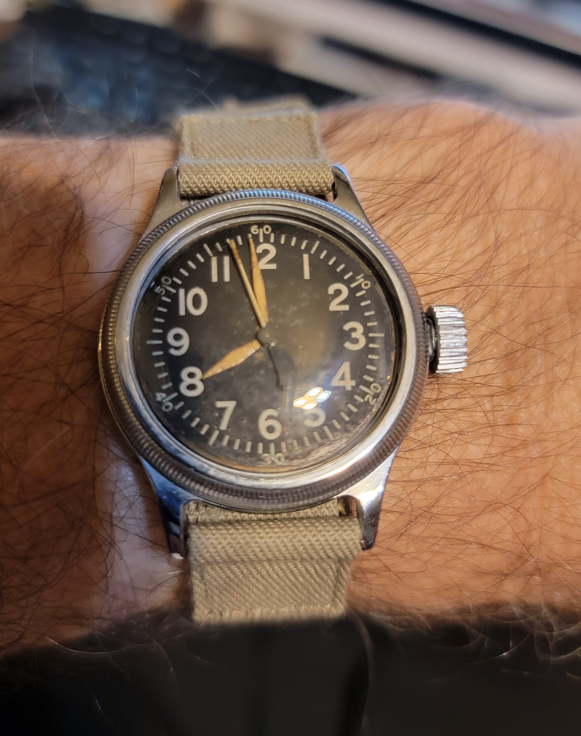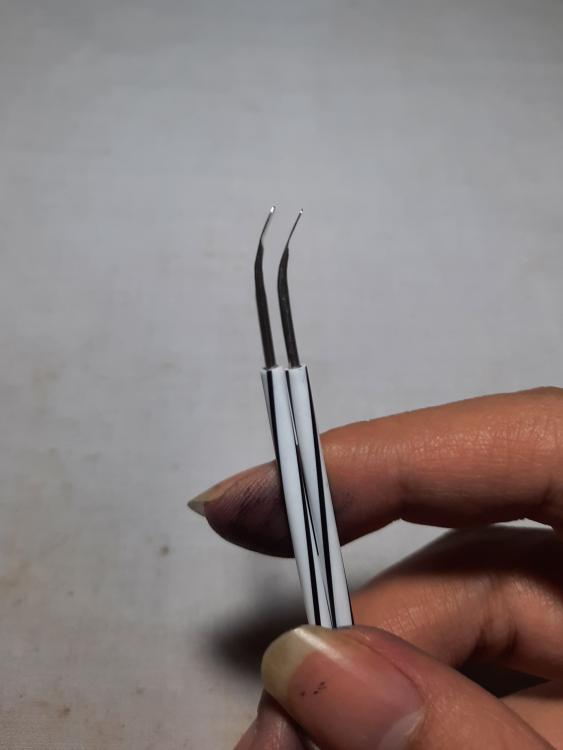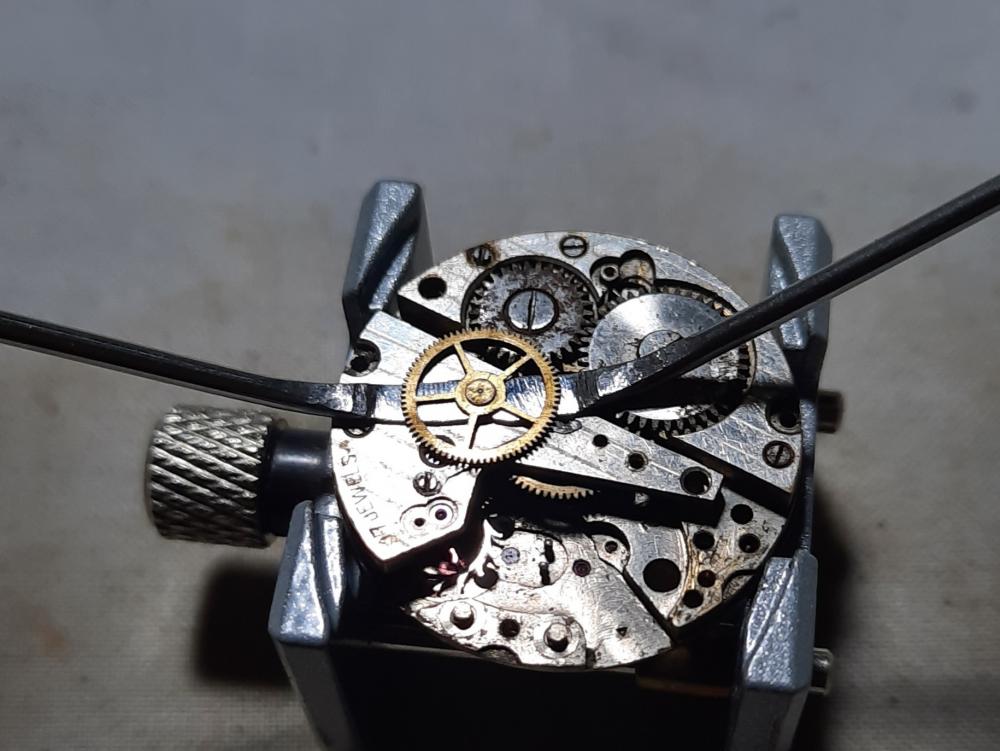Leaderboard
Popular Content
Showing content with the highest reputation on 10/12/23 in Posts
-
Shipping isn't always cheap even way back when. I was ordering micro radio control components from a company in Canada and they shipped by UPS. I think it had to do with their own mail system was very very bad so the used UPS. The problem was in the discussion groups the people were upset because UPS didn't tell you something up front. In other words you would get your package shipping would be whatever it was that later on you would get a bill for the paperwork the customs declaration and that was a separate charge which they were upset about. Or you could shipped overnight air and it included everything and I think was like $50. So every time I ordered I had to pay $50 to avoid getting charged that the paperwork fee and that was quite a number years ago. So a lot of this depends upon the country you live etc. as to what they do. There's a lot of people in Europe that are very upset about getting something even from cousins because their country will tack on all sorts of silly taxes pushing the cost up astronomically shipping might be good but just getting the parties a very expensive One of the things to do is go and look at eBay for pricing and in particular look at the items that were sold do not look at the prices people think they should get for this stuff what the stuff actually sell for that's what you want to look at. Then warranty can be an issue as people like the play with their watches or find some hidden flaw that you didn't know existed so warranties can be definitely an issue. Which is probably why on eBay everybody says no returns in other words you have lots of pictures and they make a choice based on your pictures. I'm not going to give you the website what's interesting about the question is somebody on this group I looked at their secret identity name as it was not look like a company logo. So I looked up the company name and saw they service watches for people and they claim to be a hobbyist which is why they can do it so cheap. Now the reality is even if you were a professional you could charge wholesale prices if you are doing work on line. In other words instead charging for retail yet have a wholesale price and wholesale prices vary between who is actually doing it. Lotta times things would be 50% the retailers hundred dollars you would typically charge $50 other shops like where I work it's more of a percentage. I believe at one time my boss tried to set the price for the jewelry stores but typically jewelry stores were always double stuff occasionally they'll triple it so it's best to figure out what it actually cost to do business and charge that oh and most the time people don't have any idea what it actually cost to do their business. In other words if you're going to repair watches and make money and you're not going to do it as a hobby. Let's break down something as a hobby you can purchase watches broken fix them up sell them at a small amount of money probably not recover your costs which I'll explain below and use the money to purchase another watch to have fun. Or I used to know somebody who would sell typically pocket watches and I was trying to figure out what exactly he was really doing. In other words he purchase watches he restored them to new condition they were very nice. Apparently the real purpose of his business was to allow him to get watches for his collection and everything else was just a way of paying for that. Now if you're doing this to make money then things changed dramatically. Like how much is your time worth per hour? You ideally should cover the cost of rent of the location you read cover the cost of all your tools all your supplies and then prices will change dramatically. Although and what about the overhead of time in other words somehow a job comes to you he would have to do some paperwork bookkeeping when you ship the watch out you're not preparing the watch so you do have to charge for that time there's a lot of other charges included. Then the risk of destroying valuable things. This comes back to the unnamed person on this discussion group somewhere where I can't even say the last question he was asking is struggling with an expensive watch and that's where I saw the website where I'm a hobbyist I charge a fraction of the professionals and was working on a watch that he had no business working on and have destroyed the balance wheel. So I suppose you can put on your website I am a hobbyist I really cheap and I might destroy your watch and it's your fault for sending it to me I would consult with an attorney to see if you get away with that. I'm not sure that he actually said that on the website but it would be a factor of if you get a Rolex and you break something it will be expensive. This is why typically what watch shops do is charge enough money to cover breakage basically on an average of your watches. You might not billet cover everything in one watch but on average. So for instance and this approximation because I don't actually memorize battery changing prices I think our cheapest battery change price is $20. All the way up to maybe $80 for high-end watch. The batteries are basically the same cost now we do charge more because all the watches go in a dry modern pressure checking machine and a half things are darned expensive at all watches within reason I restored back to water resistance so we offer a bonus service. In other words if you give us a water resistant watch will return it in the same condition versus other places where your watch may fill with water the first time you get near it because they have no idea. But the big reason of the price difference is more expensive watches it's basically like an insurance policy they're paying a bonus price for high-end watches in case you have an accident so the reality is you have to charge more money for more valuable watches because accidents will happen. It's really hard to offload the responsibility onto the customer that it's their fault for being stupid enough to give you a watch. Now if you get really concerned You can investigate in insurance. I had heard a story of somebody who is authorized to service can't remember the brand of watches where she got insurance policy for working on stone dials because of your break a stone dial it's very expensive. I didn't even know such a thing existed as an insurance policy for that type of work. Another shop no long time ago was authorized to do Rolex watches I believe what he did was charged twice the price like putting in a new crystal of what the cost of the crystal was Sophie breaks one his price would cover the second one but unfortunately realistically it probably should be 2 1/2 times a yes pricing of watch repair is an interesting subject. Because of you look at other discussion groups they've gotten used to basically hobbyists who repair watches for the fun of it because they could not possibly be making any money if they were taking into account rent wages business expenses. So on this other group they frown on prices that seem too high based on unrealistic pricing that they gotten used to. It used to be that they thought a pocket watch could be repaired for less than $50 I think right now they think anything over $100 is expensive although there was a discussion recently of somebody saying is this a good price and I think in general that thought it was too high. For which I find amusing because are starting price is higher than what they thought was too high.4 points
-
I raised this question a while ago, please see link below, this may be useful:3 points
-
Hello and welcome to the forum! Before you go any further, please be aware that you are not allowed to promote your business on here.3 points
-
That's @Nucejoe's recommendation for removing rust and stuck screws. I think it's just his excuse for having Coke around the house.2 points
-
2 points
-
I know my advice sounded a bit harsh but for a beginner who hasn't developed the fine motor skills required for working on pivots as fine as 0.12mm yet, I think my advice is justified. For the same reason, I don't advise beginners to do hairspring adjustments. The motor skills required for such jobs have to be developed over time. The cost for a decent Steiner Jacot tool is around $600 at the moment. I think the money could be better spent elsewhere, like better lighting and a microscope. I would say that the microscope is the biggest game changer in watchmaking. It takes time adjusting to working with a microscope but I think the learning curve is not too steep and the gains far outweigh the inconvenience. And I think a microscope actually helps to develop fine motor skills. I think the reason why I don't use my Jacot tool much is because I find it difficult to work the Jacot under a microscope. And the tool addict in me is telling me to get a Jacot drum for my lathe and get another microscope with a swing arm.2 points
-
Kalle on Chronoglide showed a way for removing such wheels. He said he was shown it by his original tutor who never used any tool. Using two pieces of peg wood, ease the tips under the wheel centre and rotate the wheel with small movements, applying gentle pressure toward the centre. He said it always works. I tried this on three pressure fit wheels that were tight. I cannot afford the Presto tool. Each took over 4 minutes, but it did work, and no distortion to the wheels. What he said is that he uses the Presto tool for time saving. He presto, it's off.2 points
-
Those are hand lifters. How do you intend to use it to remove a 5 spoke free wheel?2 points
-
One of the minor little problems is which Grease? Thinking about Tools watch tools Aren't you in a country where they allegedly make watches? The reason I bring this up is if they make watches allegedly it stands to reason that there might be shops lurking here and there selling used horological tools? At least much more likely they are then other parts of the planet where they don't make watches? When I deal with pocket watch spring is I've seen spring is coming out of the barrel that looked beautiful. In fact I just put a spring back in Illinois that came out of the watch because it looked perfect. Versus brand-new Springs that have looked worse and the other day I regret not getting a picture a brand-new spring which I have to take out of the ring is because I have to use a mainspring winder put them in to get the end stop book. This brand-new spring basically had the curvature for the Armature and it went off basically straight it had no curvature at all and that just didn't quite seem right but it's what I had and the watch seemed to work. So yes there does seem to be a lot of variation in the curvature of new springs from beautiful back occurs which should produce a really nice long linear power to others that have no back curve at all or any other curve Then what Omega recommends in a working instruction versus the service center where they just throw everything away. Okay they don't actually throw it away they return it to the customer. One of my friends took his coaxial escapement watch in and when he got it back he showed me the picture of the parts there was a mainspring barrel had been disassembled some spring was out and you could see it. Although a friend who worked in the service center is sometimes apparently they were just randomly put mainspring barrels in when they sent them back they were entirely well the had leftover parts that they didn't use and they would return them to the customers not necessarily the right customer which I found amusing. So know we cannot go and raid the trashcan and get all this wonderful stuff. Oh and that would include the epilam I did inquire about that. Now with the modern cleaning machines that do really nice jobs of cleaning they basically epilam every single watch it's in the final rinse stage. Only a couple of components are removed everything goes through and they go through this stuff in huge quantities. Unfortunately when they dump it out it's all mixed together in other words the will cleaner the epilam and while it was a thought So you're looking for working instruction 67 which doesn't exist in the wild but let's see if I can easily snip out a few images. Easily stepping was not exactly I had to work really hard as I did not feel like taking time the airbrushed out the corners. Plus somewhere I think down below I mentioned I skipped over the section of breaking grease as I know I've snipped out images and their lurking somewhere else on the message board. Amusement in all the things you look for because based on some of these images none of the pocket watches or most of them should I be reusing the mainspring barrel. But fortunately for Omega other talking about relatively modern wristwatches the barrel should be fine. Yes I've seen the reference to not using solvents at all of course they don't say why. I will do it occasionally when I'm cleaning new old stock mainsprings that seem to have something sticky on them or reusing a new spring which was previously lubricated with something. Notice how they don't use lubrication on the spring at all. Oh and then notice on the cleaning the reference to epilam. This is one of the reasons you can use the HP oils I think any time I've seen a reference to the HP oils they do have a habit of spreading over the place despite with their technical sheet says so you have to use epilam. Oh and you will note I'm skipping several images because they're lurking somewhere else on the message board. Hours I skipped over the section of how to apply the breaking grease B is as I said it's been covered somewhere before. And then the real purpose of this was to show you that yes you really can reuse a mainspring as long as everything is reasonably perfect.2 points
-
Amazing, thanks @JohnR725! Interesting that they suggest using "Moebius grease" on the studs of the reduction wheel and reverser connecting wheel. I'd have used HP 1300 (but with Epilame). Interesting. Thanks for the advice! It's true. Looks really good. But as I said, I don't have a mainspring winder. And while I have indeed hand-wound mainsprings into barrels before, I won't do it anymore. While the spring may be fine before, the risk of distorting it and, even more so, contaminating it with dust is too high. Hahaha, I would! I don't have many, though. Once I have accumulated a significant amount, I'll let you know.2 points
-
If that is so then do as I suggested in my previous reply. Just one more thing about the replacement platform try to get one so the 4 screw holes are more or less in the same place. If not that will be a dead giveaway that it is a replacement and the value will be affected a lot.2 points
-
Good for you. But that looks a perfectly good spring to me. I've had new springs that didn't looks so good. Can you send me all your "old" mainsprings please2 points
-
Its been more than a couple of years since I posted anything I have been working on. But today I had an hour to spare in the lab. One of the students is a Glycine guy and he wanted to swap out movements on two different Glycine Airman GMT one with Sellita and the other with ETA. I told him they're practically identical, but he insisted so...here it goes. As you can see they both have 24 hour dials and some slight differences in details. The swap was straightforward and no problems with the dial. The case tubes prevented swapping the stem and crown, so those had to remain with the respective cases. Everything else was uneventful. By the way, one of these was converted to a GMT purist with a hands kit sold by glycine that includes a spacer to eliminate the red hand and make the hour indicate 24 hour like the original airman watch. That did NOT work out right because the washer didn't quite fit. The hour hand would indicate somewhere in between 12 hour and 24 hour time. The students watch has the metal bracelet, the other I might buy. It now had a Selitta 330-2 which I have not worked on. At 44mm, the watch itself is a little bigger than I'm used to, but its distinctive and has history.1 point
-
I understand nitroglycerine is quite simple to make, but very unpredictable. Perhaps substitute a bottle of watch oil at work then leave for an urgent coffee break 2 blocks away.1 point
-
Have you ever thought of explosives? Occasionally at work I ask if I can get some C-4 or perhaps primer cord and as of yet none of that has materialized. Although I wasn't actually thinking of using it for disassembly purposes well kind of I was more thinking of making a problem go away permanently. But that might be considered inappropriate and probably some custard be unhappy. Although conceivably I might be very happy of some of the watches were to disintegrate permanently but we do not take watchmakers happiness into consideration in things The end up with interesting situations. Perhaps the original person found the Presto tool Not working. As you'll notice there are actually two separate tools so conceivably they had the wrong one. But as I also conveyed their other tools and finding the other tools are challenging if you don't know they exist. Then a creative souls might work out other ways to do the task. This then of course brings up the problem of? We end up with a interesting problem of if somebody has a bad experience with a Tool does that make the tool bad for ever for everyone in the universe? So yes we do get interesting problems and watch repair we seem to have lots and lots and lots of different ways lots of different opinions lots of just everything. With the unfortunate reality of anything in life is there is no 100% this is the way to do it or else. Although that can conflict with some of the views on this group Who do seem to believe in Absolutes.1 point
-
As Oregon has uranium mines, no one will notice if you dig a hole in the back yard https://www.oregon.gov/energy/safety-resiliency/Pages/Uranium.aspx For those in the UK, I just found this on Gov.uk https://assets.publishing.service.gov.uk/media/5fdca79bd3bf7f3a364b5c31/JSP_392_Chapter_22_-_LUMINISED_EQUIPMENT__Alt_Text_.pdf By "normal refuse route", I assume that's household waste.1 point
-
Same problem here in the UK - who do you contact? I don't know about the USA, but in the UK I understand it's OK to dispose of a radium watch in the household waste. But not a whole lot at once. Though I've no idea where you would take them. When removing the radium, I seal everything in zip lock backs and put in the household rubbish bin. It hasn't set off any alarms yet! I guess the question is - is it OK to put a radium watch in the trash can. If so, it must be OK to put the radium (in a sealed container/bag) in also?1 point
-
I picked this up on ebay quite awhile back. I think I paid $17. It was advertised as not working. Since I have already refurbished one, I had all the stuff to do the same to this one...except the capacitor which had to be ordered. Why do I need two? Well, I am setting a remote watch shop and plan to focus on learning to repair accutrons. Watching videos on their repair, I see that screwdrivers and tweezers get magnetized. I know not to demag the watch itself, but will have to demag my tools.1 point
-
How are you cleaning the movements. What oils are you using. £3 for a new mainspring that is cheap I'm wondering if they are a poor quality. Another good make is Swiza have you repaired them.1 point
-
Hi there, Can we see a picture? There is allways a way to rid off a broken screw...1 point
-
First I'd like to second that "Yikes". I know shipping has gotten expensive, but ... Yikes! As for pricing ... "fair" is determined by the market so I'd do a little research on what watch models you intend to sell are going for all over the place. And then it comes down to marketing. Good pictures and a better description with some history if available. For example "Here's an old fixed-up Seiko. It's yours for $15." vs. "A lovingly restored vintage heirloom timepiece from the classic era of Japanese mechanical craftmanship for only a $1,200.00 investment." As for the shipping, I'd include it in the price of the watch and offer "free shipping". You'd be surprised how gullible much of an incentive it is.1 point
-
Gee- I think I’ve used my Bergeon blue a dozen times in the fifty or so watches I’ve worked on. Not a single pivot was harmed in my ham handed service. One of my better tool investments. I guess its just the movements I’ve worked on…1 point
-
I am pretty sure my dad never used the Jacot (even though he had one). He had a retail business that depended on throughput (in order to send three kids to college). He replaced a lot of staffs, but back then replacement parts were plentiful and locally sourced (Houston, Tx). The tools I inherited did include an Elgin sapphire burnishing tool that appeared to be well used (the plastic caps were repaired multiple times it seems). So, he must have done some fine tuning. At any rate, it is an interesting tool and I will continue to learn how to use it effectively.1 point
-
Yikes- that’s a bit harsh. Nobody is born a watchmaker and as a fellow hobbyist I’ll say you have the luxury of pursuing what interests you- if you’re enthusiastic about it please enjoy! There are clear benefits to amplitude and longevity of services if you acquire the skill… …and speaking of tools you don’t need I would have delayed the one everyone is quick to acquire- mainspring winders. The packs with the spring in a lovely washer are quite inexpensive and given most of the watches I work on have worn out old style carbon steel springs I’m not certain I’ll live to see breakeven on the winding set… …then again, the Vulcain on my bench is rebanking because the recommended spring size is discontinued so I went up ever so slightly …1 point
-
The only place I know of is Horlogerie Herrli in Bienne. They don't have a website, and the owner is looking to sell it so not sure how long they will be around (depends on if the buyer keeps it going). The owner is the second owner already. Huge inventory of spare parts as well as tools. https://www.madeinbienne.ch/herrli/ Otherwise I buy lots of stuff off Ricardo. Up till a few years ago there was another guy in Bienne who would do two sales per year of watch tools and parts, it was awesome. He would spend all the time in between going around buying up stuff, then rent a huge room and fill it with like 200 banana boxes of gear and open the doors to 200 raving watchmakers.1 point
-
I make a lot of staffs and do a lot of pivot work and there's no way I would be without a Jacot tool (as mentioned, I have a number of them). It's how pivots are finished at the factory, and by far the best and easiest way to get an excellent finish on a small diameter. While the old style are perfectly good, I would stick with the new style. The ability to tweek the alignment if needed is well worth it.1 point
-
I was trying a member where I found another reference and is amazing the image is lurking in my computer. Leaders the reference now this would also be Omega in the late 50s. But at least here we get a reference as to why they should not be cleaned. So typically I have reusing a spring I will wipe off whatever's there. On rare occasions I've use the hairspring risks but I'm not fond of it especially on the blued steel Springs the new old stock. The reason I'm not fond of the hairspring rinse on blued steel Springs is an Elgin documentation on mainspring is they made the remark that the blued steel Springs shatter because of basically people touching of them and you get rust. So my concern with insolvent on a blue spring is it will be to clean so I like to get lubrication on it as fast as possible so it can't form any form arrest and I try very hard not to touch the spring at all. I'm less concerned with the white Springs. Then there is the other strange little thing that relates to why they're not cleaned So in the 50s document you are wiping off lubrication which implies there lubricated. In the much newer document I think that was a 2020 document they just wiping the dry spring because there is no lubrication are all. Then in the packaging or upon the packaging the reference to invisible lubrication Teflon perhaps doesn't say that though I think the sort of a they're implying that the metal itself doesn't need lubrication it will slide on itself. Then somewhere I believe once again it's Omega but I don't think I snipped it out there was a reference that they may have used a liquid lubrication originally an extremely fine film of it which of course gets wiped off with your wiping off the spring Then we are in school they teach you how to lubricate the mainspring. Usually some bright students will ask why do we lubricate the mainspring when they are free lubricated or self lubricated and I don't quite remember what the answer was. Sometimes it's best not to ask teachers why were being taught things that seem obvious that we do not need to know this. Then yes even in the schools today they still teach them to lubricate their mainsprings. In fact they teach a very specific way using I believe they use 9501 as I would prefer or usually use 8200 although I would be happy if that was some sort of 9000 number as all the 8000 lubricants have organic or mineral properties are not pure synthetic. Yes I know secret Police will come and take me away and reeducate me for daring to say this but just because somebody has a YouTube channel does not mean they actually know what they're doing. The reason why bring up the used tools is when I was going to school in Switzerland we did find shops that sold used tools and the price was reasonable. Maybe @nickelsilver Good point you in the direction of some of the shops that have good prices on used tools. Yes is not an inexpensive country. I was looking at some travel shows on YouTube that went to Switzerland and I think every single one of them comment that Switzerland is one of the most expensive countries in Europe. Not sure if it's the most expensive but is definitely one way up on the list. But used tools in smaller cities may be cheaper than if your purchase Them and basically big city shops perhaps. For instance if you went to an antique shop anywhere that had some vintage tool especially if it looked nice it doesn't matter what country are planning Huron it's going to be extremely expensive because it looks nifty and they're not going to care that it has some practical purpose they're just going by it looks nifty and it should be extremely expensive.1 point
-
Indeed! I only have 9504 (and 9415). Hahaha, true! Really much less than you'd think. And they tend to be quite expensive. That's the other thing about Switzerland. A pizza will cost 25 USD. Be sure that used watchmaking tools aren't cheap. And then there is demand for it here -- so sellers can also get higher prices. Ahhh, I love when you post from these working instructions. A lot of obvious stuff, but here and there I learn something new!1 point
-
Hi Waggy. Felting needles you can get on Amazon or on eBay, they are about 5” long with a right angle bend where it fits into a handle. Just look them up.1 point
-
Hi. I would think a good clean/oil etc would get it working hopefully, parts can be found on eBay either as bits or donor movements for many French clocks. Take care as the pivots will not take any rough handling and are likely to break as Old Hippy said. Lubrication use windles oil it’s the best for clocks.1 point
-
What I did to make it easier to keep track of things I is put both 23's in one document. After all there should have been in one document I'm not sure why they were into. So you just have to remember that the lubrication is in the back section. Then the modification document which I do not think applies to yours is it's a later version is in its own separate document. Then the annoying thing with their documentation is And I've seen it done with another company is they're not arranged numerically in the physical book but there arranged by the numbers like 23 is at the beginning of the book. With earlier watch calibers coming later on. Whereas the other company I was thinking of one of Somewhere there is the index page which basically indexes all the calibers and then tells you which technical bulletin it's in. Tissot Service Technique No 30 Modifications on Calibers 782 783 784.PDF Tissot Service Technique No 23 781 782 783 784.PDF1 point
-
Pure water and a toothbrush would a gentle way to start and remove the worst of it. I don't know of anything which will get the threads perfectly clean and shiny, but an ammonia-based cleaner, baking soda and lemon juice are all worth a try and will not make things worse.1 point
-
Personally if the watches running and everything seems fine I would leave it alone. But just in case you would like to have a little fun in your life I'm attaching the instructions for installing the hack. Then something related the various stems. Because if you are having a problem because thickness the gasket or in the case of installing on a different watch you would have to more than likely adjust the stem so you need the other Sheet. You might even find such things as just how tight you type it back down that will have an effect also ego supertype it's going to bring it in closer as he may find adjusting that ring will change the spacing and change things. 214 hack.PDF 214 stems.PDF1 point
-
Update: I bought the dryer mentioned above and in the video. I quite like it. It's nice and small and fits on my desk. I didn't find the blower too harsh for smaller parts, but as mentioned one could make a diffuser lid to go over the parts tray if it's an issue. I did make a parts tray as the video creator mentioned in his comments to the video. He suggested it as a diffuser, but I'm using it to hold the parts while being dried. I happened to have one of the crochet hoops, he mentioned, and some screen material from one of those fryer covers that prevents grease from going everywhere on the stove (a dollar tree find). I'm also throwing fountain pen parts in there after cleanings; it's handy for any small parts. Hope this helps someone. Good day1 point
-
1 point
-
Nice one! I've just ordered a couple of these. The other coin holder could be used for storing new mainsprings, maybe. Great tip, keep 'em coming1 point
-
Hi. I am a great believer in not spending money on things I can make , modify, re purpose. For example, Watch covers, fragrance candle jars , Felting needles , oilier Sewing machine needles mounted make good probes and with a little heat can be bent, build your own clock spring winder, build your own dial foot tool, I could go on but that’s enough.1 point
-
Hi Registered with Mikrolisk, as H & F Numa Jeannin / Ivy Watch, Fleurier , Switzerland.1 point
-
It is French H & F Paris very prolific maker 1850's 1870's. It is a count wheel strike on bell, if you unscrew the bell you might find a stamp mark on the plate. It is absolutely filthy and needs a good service. These a good quality movements and need to be handled with care. The brass and steel are high grade. The steel pivots are very hard and with out care can break as they are like glass. Any more help just ask.1 point
-
Vintage watch documentation is interesting as is printed on paper. Before the days of PDFs paper documentation got scanned by watchmakers possibly some material houses for parts identification. Typically servicing was not scanned. So often times when you're looking at the technical literature you'll notice that a heck of a lot of pages are missing because servicing was not included. Then he almost never see especially today is a watch companies don't like to share it typically today do not see the updates revisions or things you should be changed like for instance this comes from Omega document Now some of these problems would rectify themselves in that if you purchased somehow a new part it would be the revised part. But on some of these revisions you're supposed to replace several parts so the only replaced one and did a mix-and-match that's not what you're supposed to be doing. But how would you know which is mostly doing because you don't have the revised technical document.1 point
-
I have never been interested in these kits. For me its the real thing or nothing. You haven't said which Christmas day.1 point
-
My research has shown that this can be down to the hairspring effectively being too short due to magnetism or the coils touching as the hairspring breathes. Try a demagnetiser and check to see the hair spring is even and flat1 point
-
I have had to put the wheel on and off a few times now, have to backtrack a bit, and I am basically doing this - stopping the train from spinning with some peg wood and then spinning the pressed on wheel. It works well. Thanks for the tip!1 point
-
1 point
-
Exactly how i do it now after trying to pry the wheel off with an incorrect tool and snapping the extended pivot Never got around to making them, inspired to do that now. Prefer levers , there just seems more control with them than presto tools.1 point
-
Well I'm also a Chinese tool guy. So I came up with my own idea to deal with these wheels. I made this pair of levers for them only. You can see I got the idea from hand lever. It works no matter how many spokes the odd wheels have. I also made my own hand levers. You could give this a try if you want it really simple1 point
-
As a decaying nucleus fissions it transforms into smaller nuclei so alpha particles among many others may pop into existance what actually happens, is that the released energy may be enough for making a new particle and the energy flow tends to stablize at the first possible stable state. Alpha particle is nucleus of helium, upon forming it quickly absorbs two electrons to stablize as helium, the newly formed helium is still as radio active as its nucleus, so if inhaled or ingested two major route it may go. 1- It may just go through our digestive system and leave our body, though it may get re-absorbed in vegtables or other food we eat , It wont disappear it just dispersses in nature. 2- It may get absorbed in some organ of our body. It all depends on the chemical composition of what we have ingested/ inhaled. Let presume its absorbed in our blood, it will stay and circulate throughout our body where ever blood goes. providing sufficient amount of radium in our blood it may cause blood cancer. If however the radio active nuclei ends up in our nail or hair it will depart in a few months, so exposure periods differ. Alpha particles do penetrate solid material like our bones or flesh, but only a short distance, it travels only a few centermeter in air. Its a massive particle so wont travel far. Other fission products such as beta or gamma particles are considered massless , they are of elctromagnetic nature so they frantically travel through the space for they have no mass or mass too small that we have been unable to discern/detect, as we speak we are recieving particles released at big bang. Consider the vastness of routes fission product may head and you will see we are the ingrediants of a soup material existance is made of, about all we can do is to stay away from strong current of radioactivity and minimize our exposure to it. Guys who made and sell you this toy "the gieger counter " knew that our brain produces fear when dealing with unknown. For all we know you could be living near a strong radioacrive source all your life, did anyone measure the dose in imported sugare or fronts coming you direction form near or far neighbores. If you work on watches just don't inhale/ ingest the luminous material and stop worrying about a threat thats no threat to you. I spent years experimenting with nuclear reactors and I know for a fact my accumulative exposure is neglegible. STOP WORRY ING.1 point
-
0 points





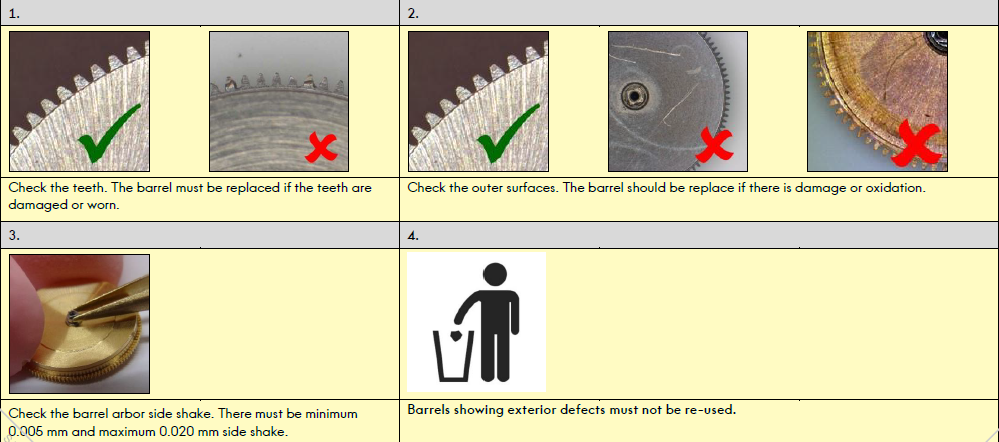


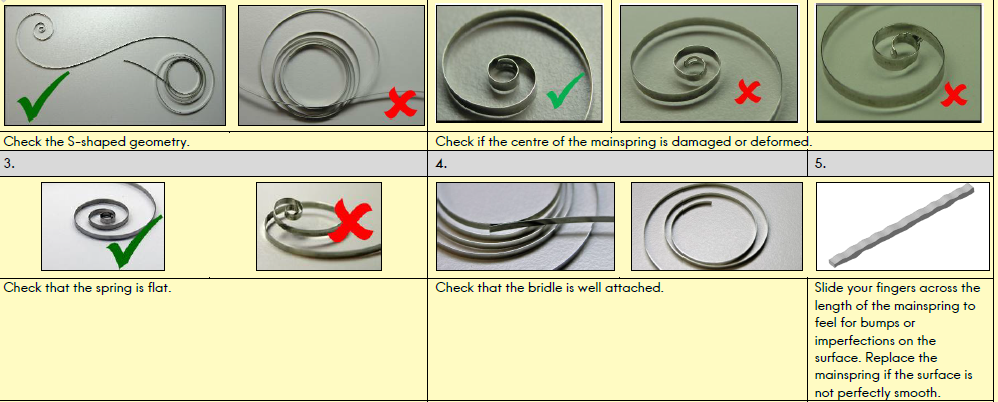

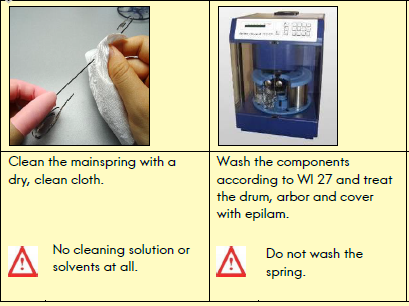


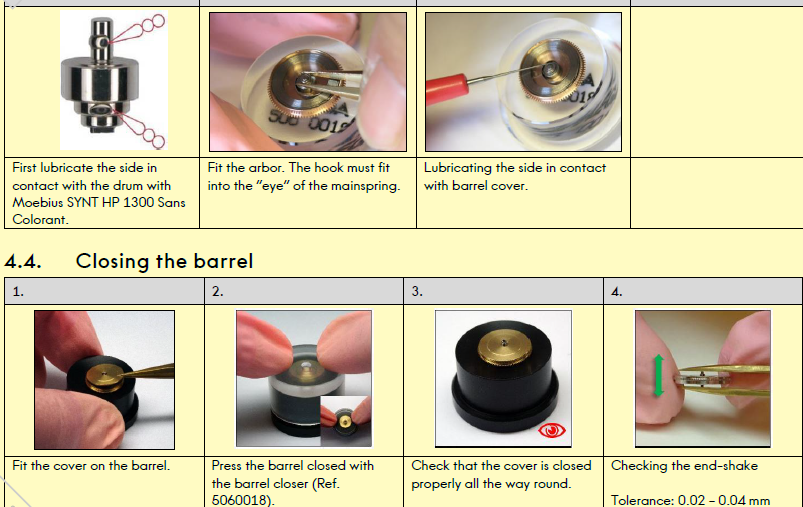
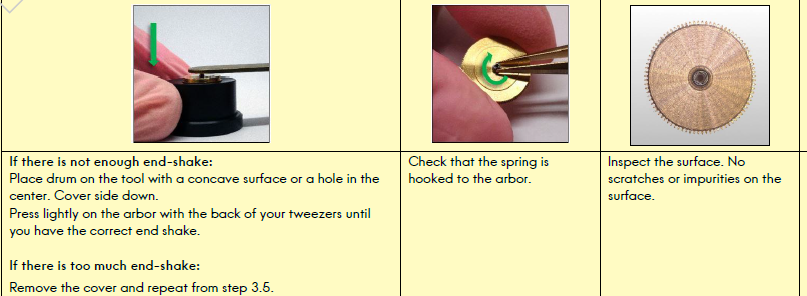
.thumb.jpg.cb17a66989f1e796fd4217db2e9ca9df.jpg)


